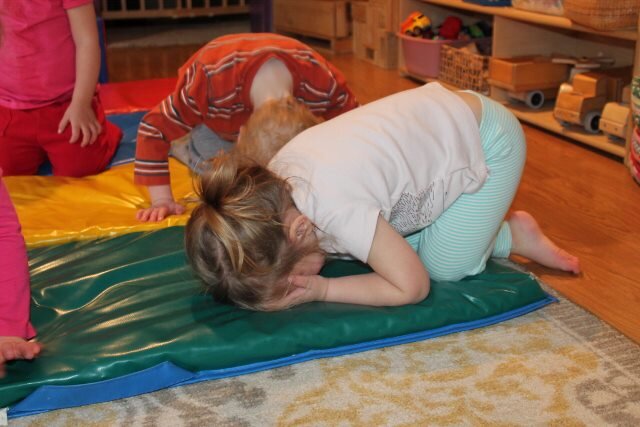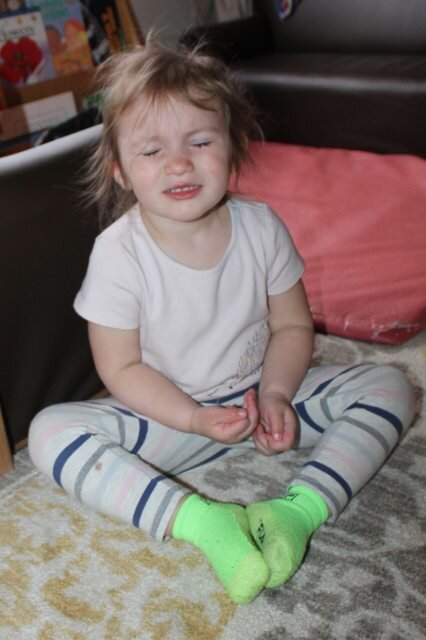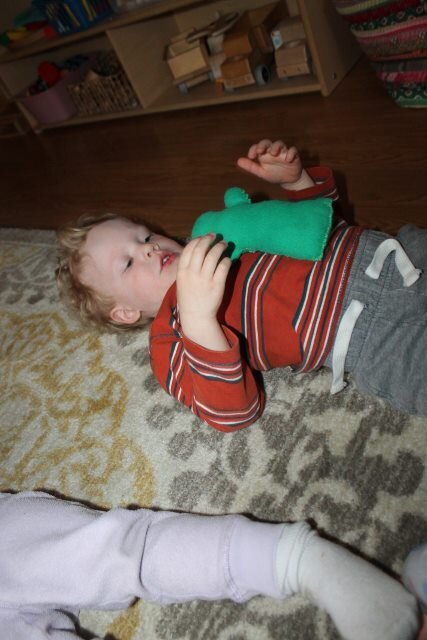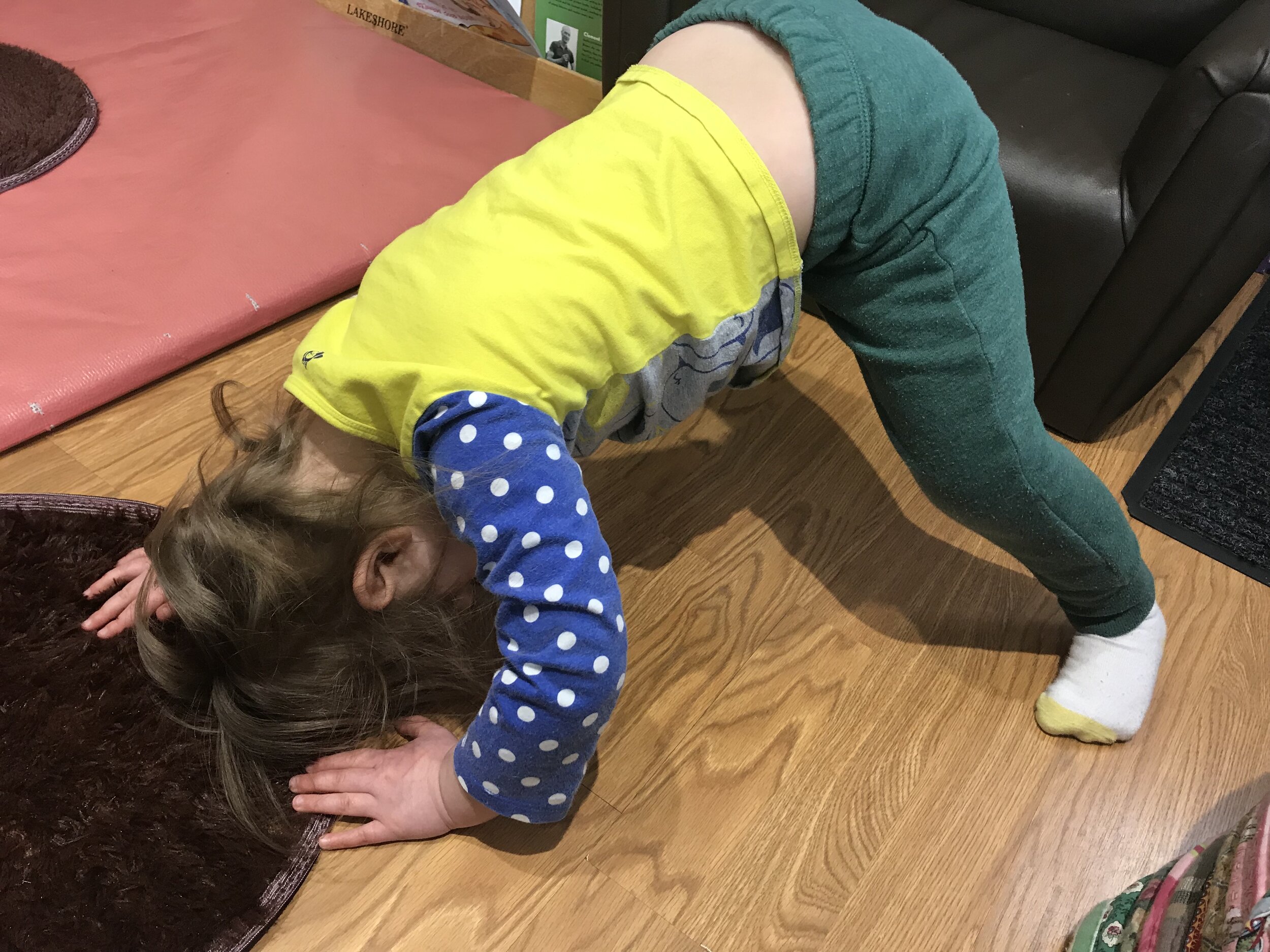Creating Yoga Practice and Meditation with Your Child
Originally published by The Other Paper, South Burlington, Vermont February 2017 article written by Ellen M. Drolette
Yoga is not just for the organic, crunchy individuals anymore; as a matter of fact, there is yoga classes especially for children and many
more for adults if all abilities all over Vermont. There is hot yoga, gentle yoga, funny named yoga that looks hard and yoga classes that will include meditation, and there are classes by the river and on the waterfront. Myself, I have dabbled with all of the above types of yoga by taking group classes, using videos and my favorite is free flow with children. I would never go as far as to call myself a yogi or any kind of a yoga expert. I do enjoy the practice however. I have discovered that practicing yoga with children is more my speed. I don’t judge myself as harshly and know they appreciate my efforts.
Create an atmosphere that is fun and stress-free. Follow their lead by keeping the session short. Ten minutes or less may be long enough. As children get more and more comfortable, they may want to do it longer.
Downward Dog, Happy Baby and Bumblebee Breaths are just a few of the yoga poses practiced with young children, children and adults of all ages across the globe. It is a practice that teaches body awareness, stress reduction and builds a healthy practice of body movement that can be practiced as a family. Many families start the practice when they have infants doing it with them on the floor nearby.
Children quickly learn through routine that breathing exercises are used at the start and end of yoga. it signals them that this is what we do to start and end each session. Even if it is just me and one other child, we use the breathing techniques as a signal. When children learn
these techniques, they can use them when they need to calm themselves, feeling like they need alone time or sometimes in times of aggression. A quiet reminder from an adult about deep breaths could be just the cure if done mindfully with intention that a child
stop and breathe. At first that comes from prompts. For example, a child falls and they are hurting and having a hard time collecting themselves. A parent may say “Take a deep breath.” This is not something that is inherently known, like just breathing in and out normally.
We call these “big belly breaths”. These can be practiced on the floor with a small stuffed animal on the belly and the child fills their tummy with air and then empties it. It gives them a great visual. I am not sure I ever knew how to fully breathe in and out until I took a class that had a focus on breaths and stretches. Children as young as 12-18 months can start learning how to use these techniques which may be funny and playful to start. Sometimes a giggle fest will ensue. My preference is to start with the flower/bubble method. Breathe in to smell the flower (pretend to pick the flower and put it up to your nose, you can get very dramatic with this), then you grab your bubble blower and blow
your bubbles while blowing out fully (again, being dramatic as you get bubbles on your bubble wand.) Another breathing technique is called the Bumblebee breath. This is one where a deep breath is taken in and as theexhale happens, a buzzzzzzzz sound is made until all of the air is out. Try is being a snake as well and use a hisssssssss.
For children that may have a hard time self-regulating, I suggest to have the child go down in to the rock pose; for adult’s that take yoga this may be called the child’s pose. Their bodies are folded with their legs underneath them and arms down by sides. The forehead is flat on the floor. This helps with making a child feel grounded and head off melt-downs if you see one coming. There are poses that can be strung together to create what is called a flow. There are strings for calm down and energizing.
My favorite books for young children are My Dad is a Pretzel By Baron Baptiste. I love that this story takes parent’s occupations and turns them into yoga poses. It is a great way to explore gender roles in professions while exploring yoga practices. For those interested in delving deeper; there is a yoga deck of cards from the same illustrator of the book by Baptiste called Yoga Pretzels. Little Yoga By Rebecca Whitford is a lovely book for an introduction to infants and toddlers to the world of yoga.
Don’t worry too much about your child’s form, just have fun. As a parent and caregiver, I find something magical in being a flower, a tree and butterfly even if for just a little while. Make sure you end with a deep breath a bow to your child and a “Namaste”
which in yoga terms means, “The light in me honors the light in you.”
Guest Blogging in 2020
I am so grateful to have been asked to do some guest blogging. Family.co covers the child care industry and child development for an audience in the US and UK. They are one of the biggest Early Years publications in the UK, and have had over 2 million visitors to the blog this year.
This was published in November, 2020. https://famly.co/blog/the-adult/avoiding-burnout-early-years-child-care/
Another was published in December, 2020 about using Appreciative Inquiry in early care and education. How Child Care Workers Can Find More Joy in Each Day | Famly
Emerging from Stressful Situations Appreciative and Strong
by Ellen M. Drolette
September 18, 2020
“Nothing can dim the light which shines from within.”
Maya Angelou
“Tell me about the best thing that happened to you this weekend?” I could change this statement and ask, “Tell me about the best thing that happened when you were quarantined with a stay-at-home order for three months.” At least that is how most of us in Vermont and around New England spent our Spring. What is the best part, you ask?
One of the highlights for me (there were many) was making connections with people around the state through virtual support and networking. I also know that I said many times, “I will never have this amount of time off again.” I am going to embrace it and enjoy it. With that came a bit of guilt.
When I reflect on those weeks leading up to reopening, and I wondered if this is what public school teachers feel like when school reopens. I was anxious, butterflies, and concerned. Was the new system going to work? Was I going to be able to manage the illness without making people angry? (probably not) Can I social distance from parents while still taking temperatures and checking in.
It was a delicate balance between doing what is safe and healthy for all and developmentally appropriate for very young children.
The bright spots personally were the closets and nooks and crannies that got cleaned in both our houses. It was a tremendous amount of time I had to reflect on my work while I scanned old photos and packed up old junk.
I also did a tremendous mental cleanse. Throughout the time of the stay at home order, I went through some significant business changes that resulted in time spent letting go. It took lots of anger, sadness, talking, and tears to get through to the other side—the side where I come out healthier, happier, and more balanced than ever before.
Little did I know that over time the love I had for myself had deteriorated without me knowing. Little by little, I had been worn down, I took some time to learn to love myself again. I realized that people only understand their level of perception; any explanation from me won’t matter.
The thing is- perception is not reality. It may be one person’s reality, but not my reality. What helps guide me are my goals or mantras.
I have a few simple goals in life.
1. Be a good person
2. Make a difference in other people’s lives.
3. Be kind even when it is hard to be.
4. Live appreciatively, joyfully, and optimistically.
5. Laugh often
6. You are worthy. Don’t let anyone tell you otherwise.
The moral of the story. Ask yourself often. What is something good that happened this week? This Month? This year?





